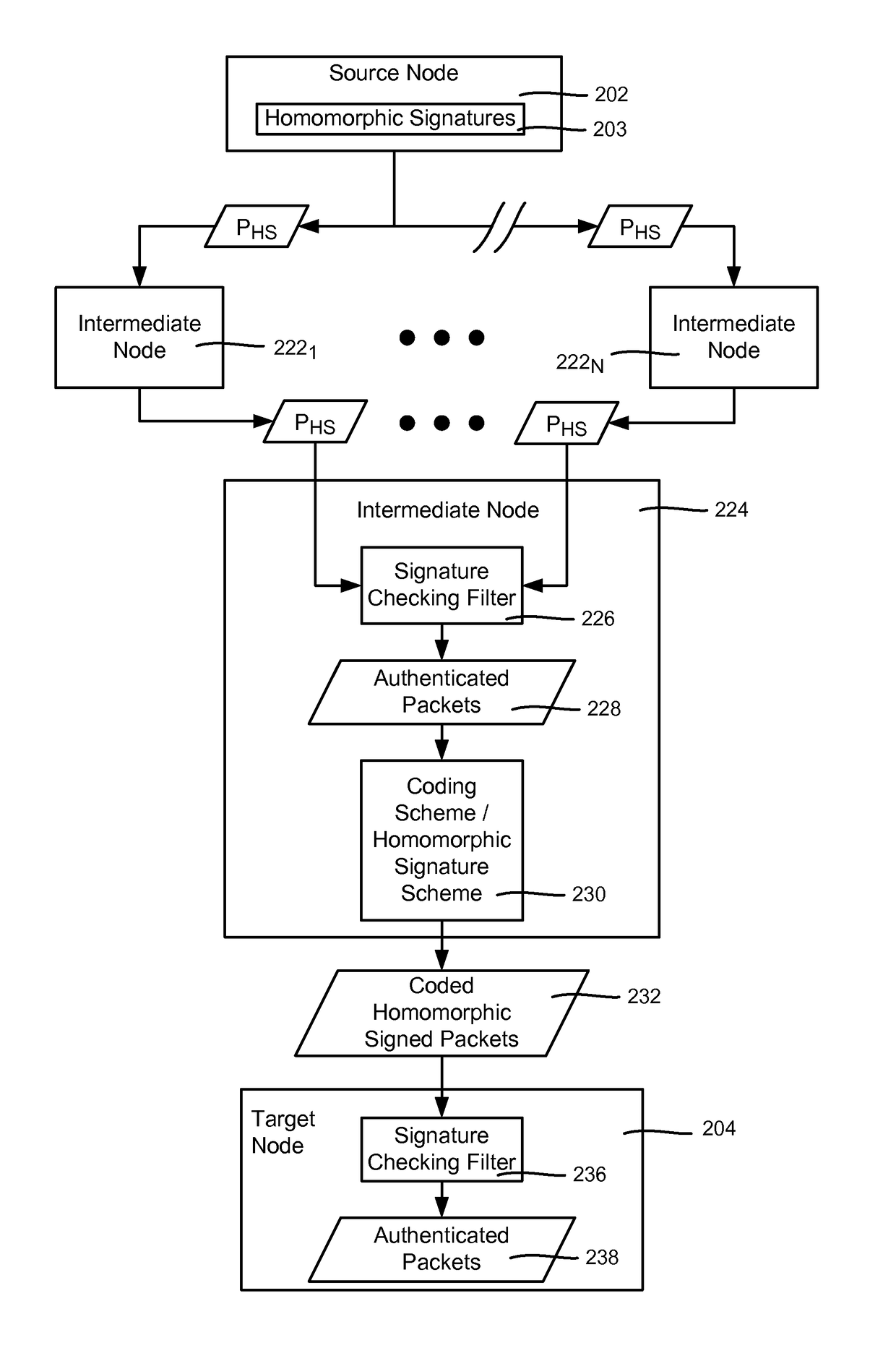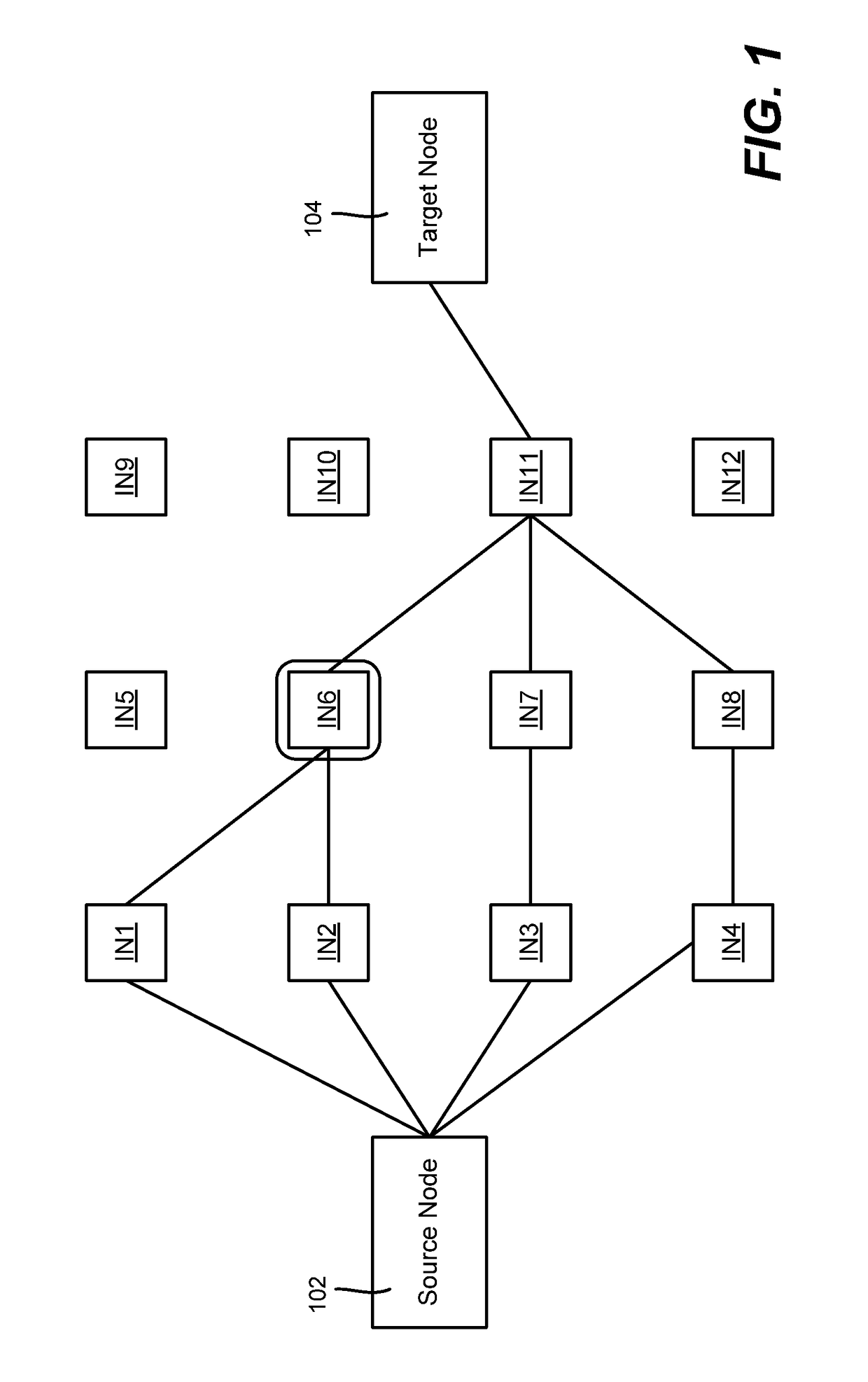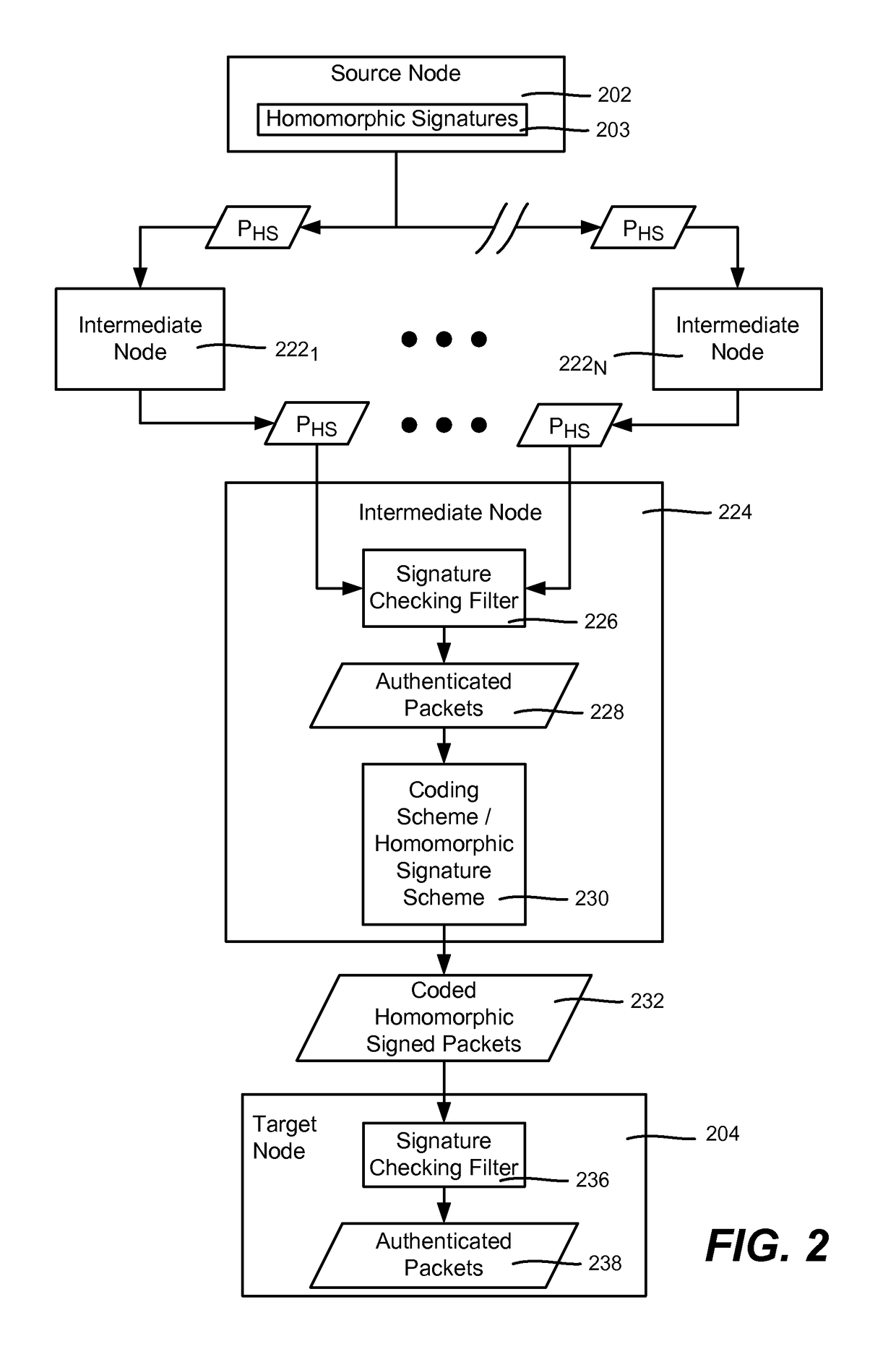Homomorphic signatures and network coding signatures
a network coding and signature technology, applied in the field of data packet routing techniques, can solve the problems of contaminating the entire network, preventing the recipient node from recovering the original file, and high network coding
- Summary
- Abstract
- Description
- Claims
- Application Information
AI Technical Summary
Benefits of technology
Problems solved by technology
Method used
Image
Examples
Embodiment Construction
[0013]Various aspects of the technology described herein are generally directed towards a homomorphic signature scheme and homomorphic network coding signature schemes. These schemes allow for signing of packets in a way that may be used to detect corrupted packets, and thereby reduce the harm of pollution attacks.
[0014]Described herein are a homomorphic signature scheme and constructions for homomorphic network coding signature schemes. These schemes are secure in the standard model (as opposed to the Random Oracle based security of previous schemes). Additionally, these schemes do not require a special composite order pairing group, (as does the only other known scheme with security in the standard model does), thereby expanding the applicability to any pairing friendly group and making designs general to any pairing friendly group.
[0015]It should be understood that any of the examples herein are non-limiting. As such, the present invention is not limited to any particular embodim...
PUM
 Login to View More
Login to View More Abstract
Description
Claims
Application Information
 Login to View More
Login to View More - R&D
- Intellectual Property
- Life Sciences
- Materials
- Tech Scout
- Unparalleled Data Quality
- Higher Quality Content
- 60% Fewer Hallucinations
Browse by: Latest US Patents, China's latest patents, Technical Efficacy Thesaurus, Application Domain, Technology Topic, Popular Technical Reports.
© 2025 PatSnap. All rights reserved.Legal|Privacy policy|Modern Slavery Act Transparency Statement|Sitemap|About US| Contact US: help@patsnap.com



